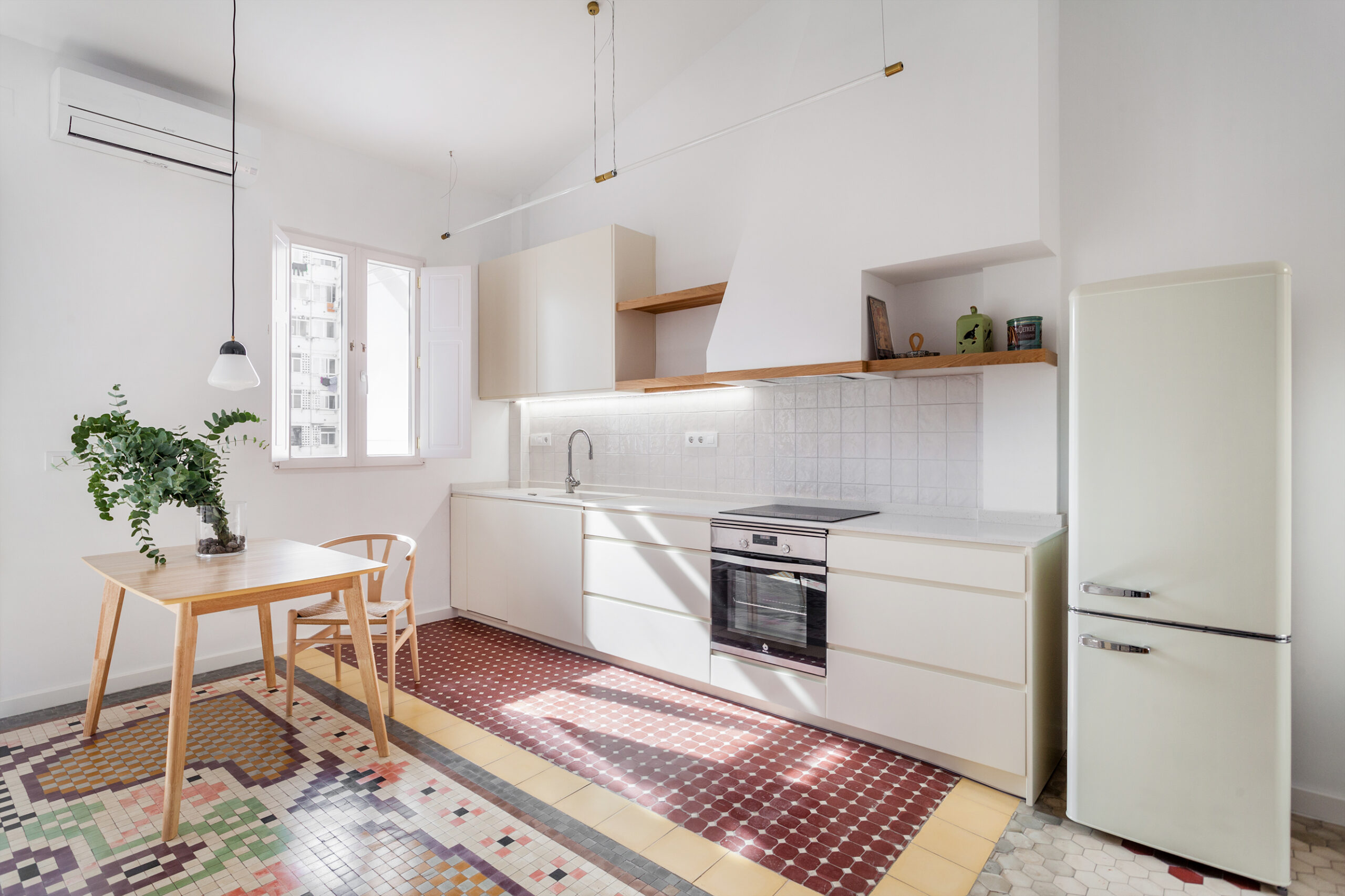Zaidia: Early 20th-century house
Early 20th Century Design and Architecture
With a distinctive design and architecture, the residence features a built area of approximately 80 m² with balconies on both facades. The orientation is north-south, with the main facade facing north and the south facade opening onto a large interior courtyard, allowing a significant amount of light to enter. For this reason, we placed the day areas here: kitchen, living-dining room, and a mezzanine. In the mezzanine, besides a guest bed, there is a study and a relaxation area.

Recovery and Rehabilitation of Original Elements
We were fortunate to work with clients who have a great sensitivity and knowledge in design and architecture. From the very beginning, they appreciated what the residence had to offer and asked us to recover as much as we could. We rehabilitated and even reproduced some original elements. We placed the living areas and common areas on the south side of the residence, and the private resting areas on the north side. This design and architectural approach allows us to maximize natural light and warmth in the day areas, while the resting areas remain cool and calm
Sustainability and Environmental Comfort: Design and Architecture
Therefore, the couple, with a child, sought an open, flexible, comfortable, and healthy space for their second home Committed to the environment, our approach to the project from the perspective of sustainability and environmental comfort was exactly what they were looking for. These factors are always important, but during the construction of this home, they became indispensable as the work began just a week before the Covid-19 lockdown. As a result, this situation highlighted the need for our homes to adhere to bioclimatic and environmental comfort criteria
Energy Efficiency and Natural Ventilation
Thus, considering the Mediterranean climate and the orientation of the residence, the project was designed with these criteria in mind. We aimed to achieve a healthy home with good ventilation and energy efficiency. Consequently, we insulated the party walls and the roof, and installed completely efficient closures on the facades. Thus, the home is perfectly prepared to prevent heat loss and reduce street noise.
Utilization of Solar Light and Heat
By placing the day areas where they receive the most solar heat and light, during the colder months, we take advantage of the heat contributions absorbed by the walls and hydraulic flooring. This flooring retains the heat from the sun’s rays during the day and releases it at night, allowing us to reduce energy consumption and achieve very pleasant warmth. For the summer months, we installed Mallorcan blinds on both facades that act as sunshades, allowing the breeze to enter unobstructed.
Cross-Ventilation: Design and Architecture
This Mediterranean breeze ventilates and refreshes the house in summer thanks to the cross-ventilation received by all the rooms. Each opening in the house faces another that opens either onto a facade or into the small interior courtyard placed at the center. Therefore, we are pleased because the house, in addition to being healthy and efficient, is functional and comfortable, without losing its essence despite the passage of time..
In summary, the design and architecture of this residence focused on sustainability, energy efficiency, and environmental comfort. The combination of recovered elements, natural materials, and bioclimatic techniques has resulted in a home that is not only efficient and functional but also warm and welcoming. This project reflects how design and architecture can work together to create spaces that enhance the quality of life for their inhabitants.




